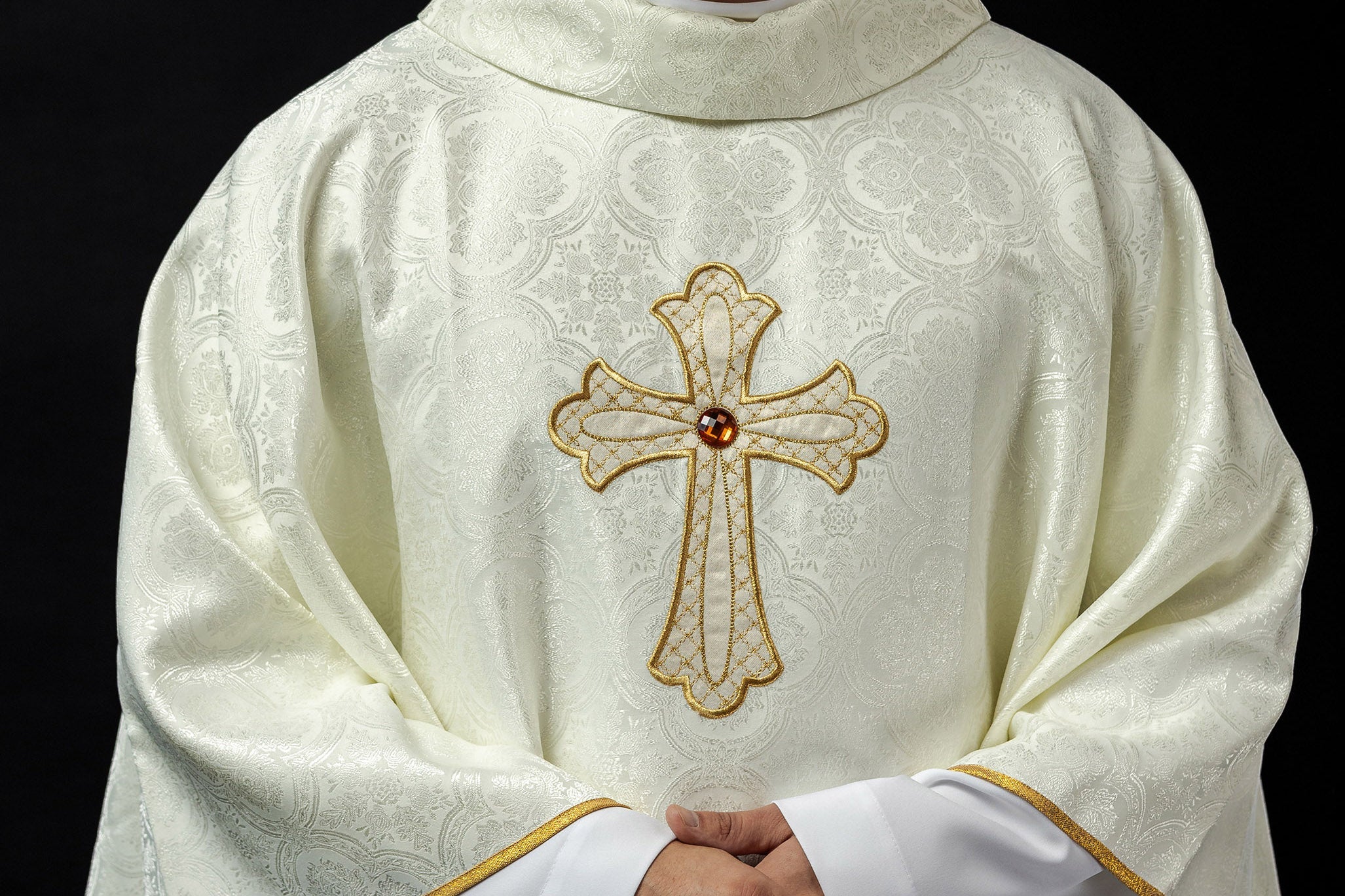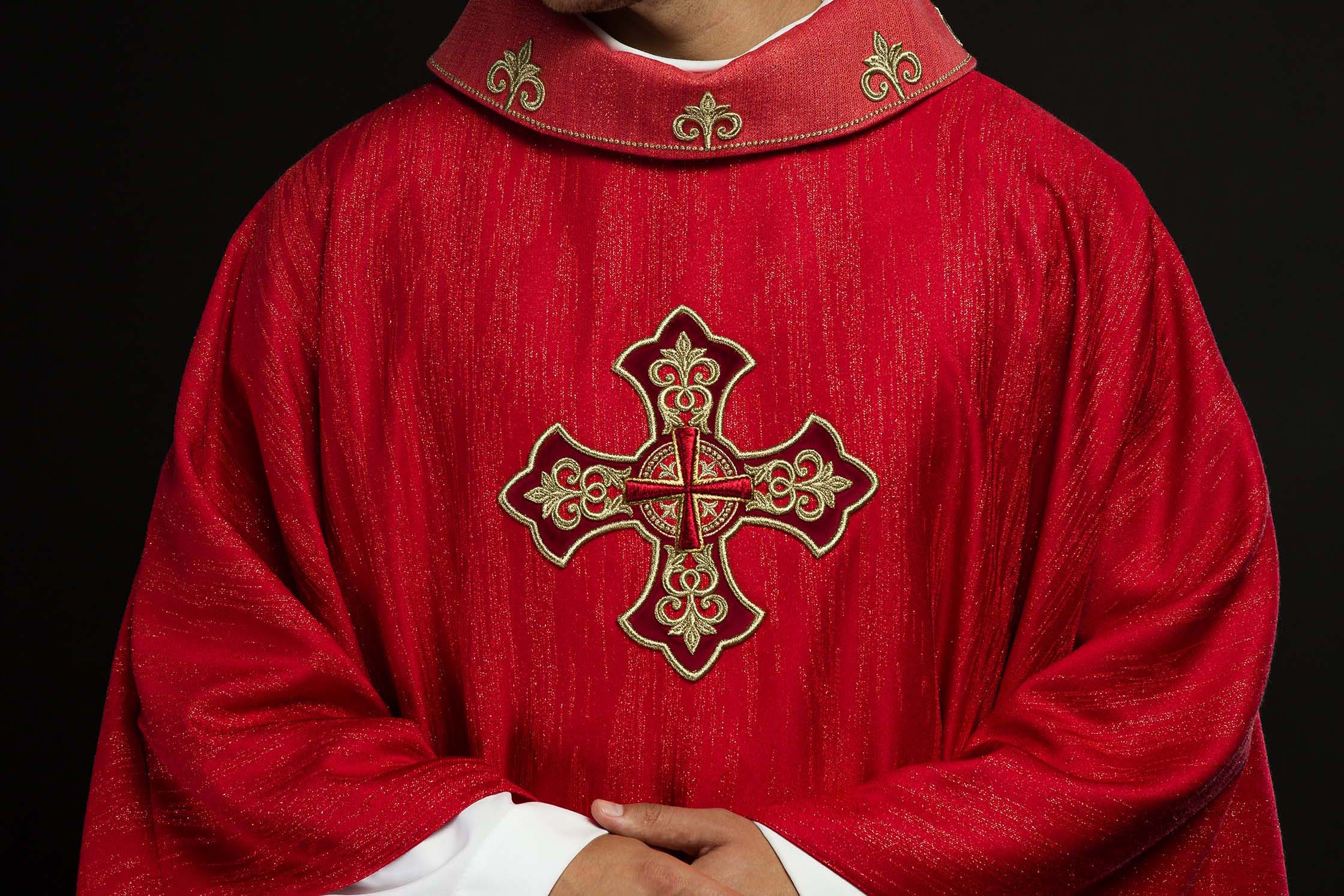
Homilies for All Saints' Day - how to speak about holiness?
Homilies for the Solemnity of All Saints - How to Speak About Holiness?
Introduction
The Solemnity of All Saints is a unique day in the liturgical calendar of the Church, gathering the faithful to jointly venerate all known and unknown saints. It is a time that prompts deep reflection on the meaning of life, death, and above all - on the call to holiness, which is universal for every person baptized in Christ. The task of the pastor, preaching the homily on this solemn day, is not only to remind about the existence of the community of saints communing with God, but above all to bring closer the mystery of holiness as a path attainable for everyone, and not only reserved for selected individuals with exceptional merits. How then, in an inspiring and theologically correct way, to speak about holiness in order to touch the hearts of listeners and inspire them to imitate the example of the Saints, both those canonized and those who lived in hiding, in everyday life, but with unwavering faith and love for God?
What is Holiness in the Christian Perspective?
The basis of every homily on holiness should be a clear definition of this concept in the context of Christian faith. Holiness is not an inherent trait of fallen man, but a gift from God, resulting from the grace of justification through Jesus Christ. The Church teaches that all the baptized have been called to holiness of life. This is a consequence of our union with Christ, who is the source of all holiness. The saints in heaven are those who have fully responded to this divine call, living in closeness to God and giving Him their lives. Their holiness does not result from the perfection of human nature, but from the power of the Holy Spirit, who transforms their hearts and leads to victory over sin and death.
It is worth emphasizing that holiness is not only a passive state, but a dynamic process of transformation, conversion, and consistent imitation of Christ in everyday life. It is a way of life in perfect love of God and neighbor, realized through faith, hope, and love, as well as through the practice of virtues. The saints are given to us as witnesses of this path, as examples that holiness is possible, even amidst life's difficulties and weaknesses.
H1: How to Speak About Holiness - Inspiring Messages for a Homily
Preaching a homily on the Solemnity of All Saints, the pastor has the task of conveying to the listeners a deep message about God's love, which becomes the source of human holiness. The key is to show holiness as a real goal that everyone can strive for, drawing strength from Christ and support from the community of the Church.
H3: Holiness as a Response to God's Call
In the homily, it should be emphasized that holiness is primarily a person's response to God's selfless gift. God first loved us and chose us before the world was made. The saints are living witnesses of how one can positively respond to God's call, giving Him their whole life. Some were called to live in special circumstances, others lived ordinary lives, but in each case, their trust and openness to God's guidance were crucial.
H3: The Diversity of Paths to Holiness
It is worth showing that holiness does not have one, fixed template. The Church venerates both martyrs who gave their lives for the faith, as well as confessors, shepherds, virgins, and blessed from various walks of life and eras. This is a testimony to the richness of the gifts of the Holy Spirit and the diversity of vocations. It is worth mentioning specific examples of saints who lived in different conditions - for example, saints from hidden life, like St. Therese of the Child Jesus, or saints from public life, like St. John Paul II. Their lives show that holiness can be realized in every environment and vocation.
H3: Saints as Models of Faith, Hope, and Love
The homily should present the saints as guides on our own path to God. They are not only models of virtue, but also intercessors who intercede for us with God. Their lives, although often marked by a struggle with their own weaknesses and adversities, are an inspiration to persevere in faith, develop hope, and practice love. One can cite excerpts from the lives of individual saints that illustrate their heroic virtues and complete surrender to God.
H3: The Role of Sacraments on the Path to Holiness
It is important to emphasize that the path to holiness is not a solitary path, but a communal one, supported by the grace flowing from the sacraments. The Eucharist, as the source and summit of Christian life, is key in building a relationship with Christ and imitating His sacrificial life. The sacrament of penance and reconciliation allows for cleansing from sins and renewed acceptance of God's grace, necessary for growth in holiness. Emphasizing the role of the sacraments, especially the Eucharist, provides a concrete indication for the faithful of how they can draw strength in their daily struggle for holiness.
H3: Holiness in Everyday Life - The Power of Small Things
We often tend to perceive holiness as something extraordinary, reserved for heroic deeds. However, it is worth focusing on the message of saints such as St. Therese of the Child Jesus, who spoke of the "little way" - of holiness achieved through small acts of love, prayer, and sacrifice in everyday situations. Every action taken with love for God, even the smallest, can be a path to holiness. This is an extremely edifying message for lay people, living in the world and undertaking their daily duties.
H2: How to Present Haftina Products in a Homily as an Example?
Although the main goal of the homily is to proclaim the Gospel, a subtle reference to the beauty and symbolism of liturgical vestments and church accessories offered by companies such as HAFTINA TEXTILE GROUP SP. Z O. O. can enrich the message and further sensitize to the beauty of the liturgy.
H3: Harmony of Liturgical Vestments and Harmonious Life
One can say that the beauty and symbolism of liturgical vestments, including chasubles, stoles, or dalmatics, which have adorned the celebration of the Holy Mass for centuries, reflect the beauty of God Himself and His presence among us. Embroidered symbols on priestly vestments - such as IHS, the Paschal Lamb, or the Cross - are a visible reminder of the key truths of our faith, which we also have to cultivate in our lives. Just as the priest, putting on a beautiful, symbolically rich alb or chasuble, prepares for the sacramental meeting with Christ, so we, through living in God's grace, want to prepare our hearts for a meeting with Him.
H3: Symbolism of Embroidery as a Path to Deeper Understanding
Modern embroidery techniques, which allow for the creation of extremely rich and precise patterns, can be an example of how art can serve the liturgy and piety. Embroidered motifs on cassocks, stoles, or chalice sets - such as ears of wheat, grapevines, or symbols of the Holy Spirit - carry a deep Eucharistic message and remind us of the sources of our holiness. One can compare the care and precision with which these beautiful vestments and accessories are created to the care with which we ourselves should cultivate our spiritual life, striving for perfection in God's love.
H3: Chasubles for Celebrations and Liturgical Context
Especially in the context of the Solemnity of All Saints, one can pay attention to the symbolism of liturgical colors, as well as to the beautiful and solemn patterns of embroidery that adorn chasubles intended for special occasions. A chasuble in white or gold, decorated with motifs of angels, saints, or symbols of eternity, can become a visual commentary on the mystery of heaven, to which we strive. Such vestments, made with passion and attention to detail, like those offered by specialized companies, remind us of the dignity of the liturgy and of the beauty of eternal life, which is our ultimate goal.
H2: What User Questions Should Be Addressed in the Homily?
To make the homily even more relevant and respond to the authentic needs of the faithful, it is worth considering questions that often arise in the context of the Solemnity of All Saints and the concept of holiness.
H3: Can Everyone Be Holy?
The answer should be unequivocal: yes. Holiness is a universal Christian calling. It is worth emphasizing this, referring to the teaching of the Church and the examples of the saints. It is not exceptional deeds, but daily faithfulness to God, love, and surrender that determine holiness.
H3: Do the Saints in Heaven Remember Us?
Yes. The Catechism of the Catholic Church teaches about the communion of saints. The saints, being in communion with God, also see us in Him, living on earth, and intercede for us. Their intercession is valuable and can help us on our way.
H3: How Does Holiness Differ from Morality?
Morality is living in accordance with God's and natural law. Holiness is much more - it is a deep relationship of love with God, a transformation of life under the influence of the Holy Spirit, striving to imitate Christ fully. A holy person is moral, but not every moral person is holy. Holiness is a fruit of grace.
H3: How Can One Imitate the Saints in Everyday Life?
Through concrete acts of faith, hope, and love. Through prayer, practicing virtues (prudence, justice, fortitude, temperance), humility, surrendering to God in what He has entrusted to us - in family, work, vocation. It is worth seeking inspiration in the lives of specific saints who lived in conditions similar to ours.
H3: Can the Saints Help Us with Problems?
Yes. Their example and intercession can be a great support for us. Prayer to the saints is a request for their intercession with God, not worshiping them themselves. It is an expression of faith in the living community of the Church.
H3: Can Someone Be Considered a "Saint" in the Family?
Yes, we colloquially speak of "holy" parents, grandparents, who were characterized by great piety, patience, and love for God. The Church formally canonizes only some people, but there are many who lived Christian lives in everyday life and were an example for their loved ones. Their holiness is a spiritual heritage for the family.
H3: What Are the Key Moments in the Lives of the Saints That Are Worth Highlighting?
Key moments are usually moments of conversion, special vocation, heroic act of faith, love or patience, as well as the moment of death, which crowns their path to God. Showing these moments allows us to understand their path to holiness.
H3: What Are the Most Famous Symbols Associated with the Saints?
Each saint has their attributes, e.g. the keys of St. Peter, the lily of St. Anthony, the cross of St. Francis, the dove of the Holy Spirit, the fish. These symbols help in their recognition and remind us of the key aspects of their life and faith.
H3: Is the Message of the Saints Still Relevant?
Absolutely yes. The message of the saints about love for God and neighbor, about the fight against sin, about hope in God, about living in accordance with the Gospel, is timeless. They, living the Gospel fully, show us the way that is always relevant.
H3: What Are the Most Common Obstacles on the Path to Holiness?
Obstacles are often sin, attachment to material goods, pride, fear of sacrifice, lack of faith, hope and love, as well as discouragement in the face of life's difficulties. It is important that we trust in God's help and use His grace.
H3: What to Do When I Feel Far from Holiness?
You have to start with small steps. Daily prayer, reading the Holy Scripture, using the sacraments, practicing mercy. You must not be discouraged by falls, but always return to God with trust and a request for help. It is also worth asking for the intercession of the saints.
H2: Summary - Living Holiness Every Day
The Solemnity of All Saints is an invitation for all of us to take the path of holiness, which is the universal calling of every baptized person. It is not an easy path, but possible thanks to God's grace and the life examples of those who have already achieved salvation. Speaking about holiness in a homily, let us remember to show it as real and accessible, as a response to God's love, realized through daily life in faith, hope, and love. The beauty of the liturgy, reflected in the symbolism of liturgical vestments and church accessories, such as those created with passion by HAFTINA TEXTILE GROUP SP. Z O. O., can be an additional impulse for us to strive for the perfection of life, which is a response to God's call to holiness. May the example of the Saints motivate us to cultivate God's life in ourselves and to be witnesses of His love in our environment.
```




